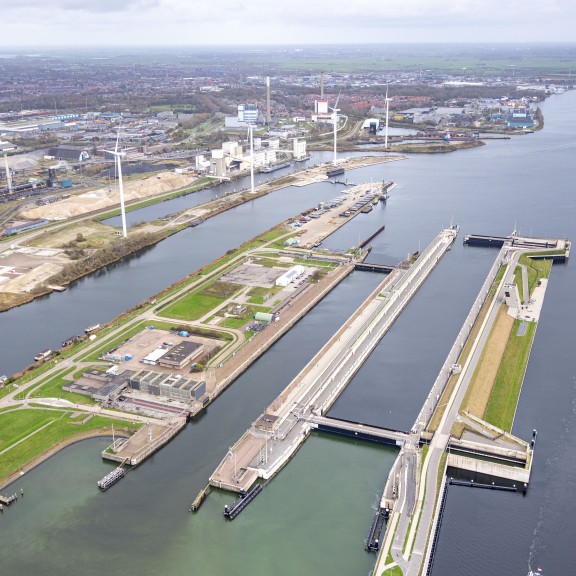
Impact of the salt barrier on the Spui- and pumping complex IJmuiden
Rijkswaterstaat has determined that the new salt barrier in IJmuiden affects water discharge through the spui- and pumping Complex in IJmuiden more than initially expected.
Operation of the salt barrier
Due to the use of the IJmuiden Sea Lock, a significant amount of saltwater flows into the North Sea Canal. To prevent further salinization, Rijkswaterstaat has constructed a salt barrier in the inner discharge channel of the IJmuiden lock complex. The salt barrier, which is currently being tested, ensures that saltwater flows back to the sea via the spui- and pumping station complex.
Drop in water level
Rijkswaterstaat had already anticipated a lower water level in the inner discharge channel due to the functioning of the salt barrier. This is caused by the inflow of saltwater, which is heavier than freshwater, and the resistance of the barrier itself. However, an initial analysis shows that the salt barrier leads to a greater-than-expected drop in the water level, particularly just in front of the pumps. A water level that is too low can cause damage to the pumps.
To prevent damage, the pumps cannot operate at full capacity when water levels are too low. Additionally, it's more difficult to proactively lower water levels during periods of heavy rainfall. As a result, the salt barrier affects water level management for both the Amsterdam-Rhine Canal and the North Sea Canal.
Impact on lock usage
Opening the sliding gate means that the salt barrier cannot yet be used to its full extent to prevent further salinization caused by the use of the IJmuiden Sea Lock. For this reason, the Noordersluis lock will continue to be used alongside the Sea Lock for the time being. It is not yet clear when the salt barrier will be fully operational. It is important to find the right balance between deploying the salt barrier and using the sea lock in different situations and periods. Rijkswaterstaat will use the coming period to gain experience with both the sea lock and the sliding gate of the salt barrier.
Recommendations
Research institute Deltares, commissioned by Rijkswaterstaat, conducted a study and shared several recommendations. The main recommendation is to open the sliding gate of the salt barrier. This allows fresher water in the upper layer to flow along the barrier, raising the water level and enabling the pumps to discharge enough water. Other recommendations include installing safeguards to protect the pumps from excessively low water levels, operating the pumps at lower speeds, and using the sea lock to discharge water. For the long term, Rijkswaterstaat has launched a study into renewing the discharge and pumping complex, including the installation of deeper and more modern pumps.
Read the article of Rijkswaterstaat (in Dutch)